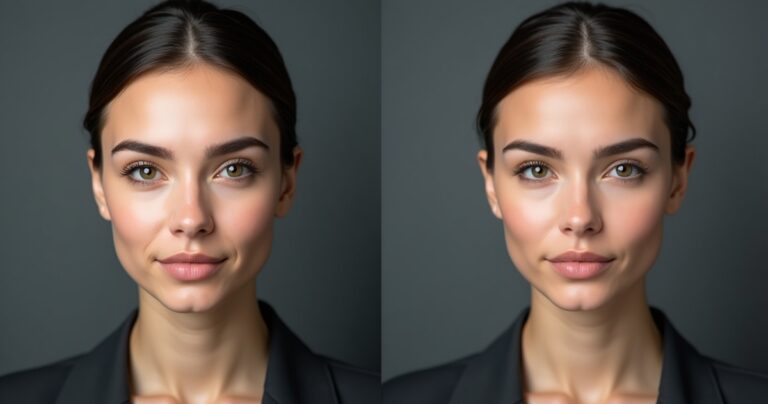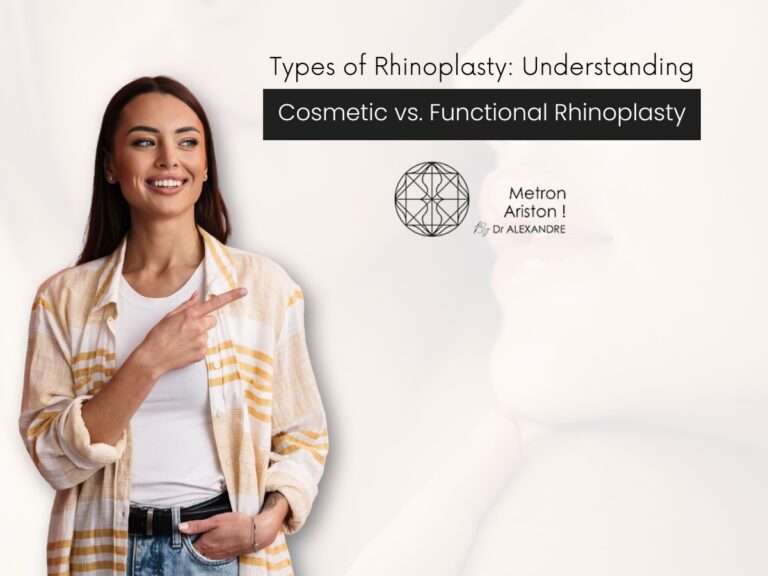Rhinoplasty Meaning: Understanding the Nose Job Procedure
Rhinoplasty, commonly known as a nose job, is a surgical procedure that reshapes the nose for either cosmetic or functional purposes. This article delves into the intricacies of rhinoplasty, exploring its meaning, types, reasons for undergoing the procedure, and much more. By the end, you’ll have a comprehensive understanding of what rhinoplasty entails and how it can impact one’s life.
What is the Meaning of Rhinoplasty
Definition and Etymology
Rhinoplasty is derived from the Greek words “rhinos,” meaning nose, and “plassein,” meaning to shape. It is a surgical procedure aimed at altering the shape or function of the nose. This can involve modifying the bone, cartilage, or skin to achieve the desired outcome.
Nose Job Results can make your nose look different and better
many people are happy with how their nose looks after a Nose Job Results
Rhinoplasty is not just about aesthetics; it can also address breathing issues and other functional problems. The procedure has evolved over centuries, with modern techniques offering more precision and better results.
Common Terms and Synonyms
Rhinoplasty is often referred to by several other terms, including nose reshaping, nasal surgery, and nose job. These terms are used interchangeably but essentially refer to the same procedure.
- Nose reshaping
- Nasal surgery
- Nose job
Types of Rhinoplasty Procedures
Open Rhinoplasty
Open rhinoplasty involves making an incision across the columella, the tissue between the nostrils. This approach provides the surgeon with better visibility and access to the nasal structures, allowing for more precise modifications.
Open rhinoplasty is often chosen for complex cases where significant reshaping is required. It offers the advantage of direct visualization, which can lead to more accurate results.
Closed Rhinoplasty
Closed rhinoplasty is performed with incisions inside the nostrils, leaving no visible scars. This technique is less invasive and typically results in a shorter recovery time.
Closed rhinoplasty is ideal for patients requiring minor adjustments. It is less disruptive to the nasal tissues, which can lead to quicker healing.
Revision Rhinoplasty
Revision rhinoplasty is a secondary procedure performed to correct or improve the results of a previous rhinoplasty. It can address issues such as asymmetry, breathing difficulties, or dissatisfaction with the initial outcome.
Revision rhinoplasty is often more complex due to scar tissue and altered anatomy. It requires a skilled surgeon with experience in corrective procedures.
Reasons for Getting a Rhinoplasty
Cosmetic Concerns
Many individuals opt for rhinoplasty to enhance their facial appearance. This can involve reducing the size of the nose, altering its shape, or correcting asymmetries.
Cosmetic rhinoplasty can boost self-confidence and improve overall facial harmony. It is one of the most common reasons people seek this procedure.
Functional Issues
Rhinoplasty can also address functional problems such as breathing difficulties caused by a deviated septum or other structural issues. This type of surgery is often referred to as functional rhinoplasty.
Functional rhinoplasty can significantly improve quality of life by alleviating breathing problems. It is often covered by insurance when deemed medically necessary.
Reconstructive Purposes
Reconstructive rhinoplasty is performed to restore the nose’s appearance and function after trauma, injury, or congenital defects. It can involve rebuilding nasal structures using grafts or implants.
Reconstructive rhinoplasty is crucial for patients who have suffered nasal damage. It aims to restore both aesthetics and functionality.
The Rhinoplasty Process
Initial Consultation
The rhinoplasty process begins with an initial consultation with a qualified surgeon. During this meeting, the surgeon evaluates the patient’s nose, discusses goals, and explains the procedure.
A thorough consultation is essential for setting realistic expectations. It allows the patient to ask questions and understand the potential outcomes.
Pre-operative Preparations
Before undergoing rhinoplasty, patients must follow specific pre-operative instructions. This may include avoiding certain medications, quitting smoking, and arranging for post-surgery care.
Proper preparation is crucial for a successful surgery and smooth recovery. Patients should adhere to all guidelines provided by their surgeon.
Surgical Techniques
Rhinoplasty involves various surgical techniques depending on the desired outcome. These can include reshaping the nasal bones, trimming cartilage, or adding grafts for support.
The choice of technique depends on the patient’s anatomy and goals. Surgeons use their expertise to select the most appropriate approach.
Post-operative Care
After rhinoplasty, patients must follow a detailed post-operative care plan. This includes managing swelling, avoiding strenuous activities, and attending follow-up appointments.
Proper post-operative care is vital for optimal healing and results. Patients should closely follow their surgeon’s instructions to ensure a smooth recovery.
Rhinoplasty Recovery and Results
Timeline for Healing
The recovery timeline for rhinoplasty varies but generally involves several weeks of healing. Initial swelling and bruising subside within the first two weeks, but full results may take up to a year to manifest.
- Initial swelling: 1-2 weeks
- Bruising: 1-2 weeks
- Full results: Up to 1 year
Expected Outcomes
Rhinoplasty can lead to significant improvements in nasal appearance and function. Patients often experience enhanced facial harmony and improved self-esteem.
Expected outcomes vary based on individual goals and anatomy. A skilled surgeon can help achieve the desired results.
Potential Complications
Like any surgery, rhinoplasty carries potential risks and complications. These can include infection, bleeding, or dissatisfaction with the results.
Patients should discuss potential risks with their surgeon. Understanding these risks helps in making an informed decision.
Statistics on Rhinoplasty Procedures
According to the American Society of Plastic Surgeons, rhinoplasty is one of the most popular cosmetic procedures. In 2020, over 352,000 rhinoplasty procedures were performed in the United States alone.
- Over 352,000 procedures in 2020
- One of the top cosmetic surgeries
- Popular among both men and women
Choosing a Qualified Rhinoplasty Surgeon
Credentials to Look For
When selecting a rhinoplasty surgeon, it’s crucial to verify their credentials. Look for board certification, extensive experience, and a strong track record of successful procedures.
- Board certification
- Extensive experience
- Positive patient reviews
Questions to Ask During Consultation
During the consultation, patients should ask questions to assess the surgeon’s expertise and approach. Inquire about their experience, surgical techniques, and expected outcomes.
- What is your experience with rhinoplasty?
- What surgical techniques do you use?
- What results can I expect?
Non-surgical Alternatives to Rhinoplasty
Dermal Fillers
Dermal fillers offer a non-surgical option for minor nasal adjustments. They can be used to smooth out bumps or enhance the nasal bridge temporarily.
Dermal fillers provide a quick and less invasive alternative. However, results are temporary and require maintenance.
Nasal Strips and Dilators
Nasal strips and dilators can help improve breathing by opening nasal passages. While not a substitute for rhinoplasty, they offer a non-invasive solution for minor functional issues.
These alternatives are suitable for those seeking temporary relief. They are easy to use and widely available.
Rhinoplasty Meaning in Different Cultures
Historical Perspectives
Rhinoplasty has a rich history, with evidence of nasal surgeries dating back to ancient India. Over the centuries, techniques have evolved, reflecting cultural attitudes towards beauty and function.
Historical practices laid the foundation for modern rhinoplasty. Cultural influences continue to shape perceptions of nasal aesthetics.
Modern Attitudes
Today, rhinoplasty is widely accepted across cultures as a means of enhancing appearance and function. It is embraced by individuals seeking to align their features with personal or cultural ideals.
Modern techniques offer more natural results. Rhinoplasty is now accessible to a diverse range of patients.
Advancements in Rhinoplasty Techniques
3D Imaging and Planning
3D imaging technology allows surgeons to create detailed models of the patient’s nose, aiding in precise planning and visualization of the desired outcome.
3D imaging enhances communication between surgeon and patient. It helps set realistic expectations and improve surgical accuracy.
Preservation Rhinoplasty
Preservation rhinoplasty focuses on maintaining the nose’s natural structures while making subtle adjustments. This approach aims for more natural-looking results and reduced recovery time.
Preservation techniques prioritize the nose’s original anatomy. They offer a less invasive option with lasting results. Rhinoplasty healing duration Most people recover from rhinoplasty in about 2 to 3 weeks but full healing can take up to a year for the nose to settle into its new shape Rhinoplasty techniques vary Doctors use different methods to change nose shape and size depending on what each patient needs Some surgeons prefer open surgery while others use closed techniques
Nose surgery classifications Temporary nasal reshaping Rhinoplasty recovery period After a nose job you need to rest for about 1 to 2 weeks The
Temporary nasal enhancement Sonic nasal sculpting uses sound waves to reshape the nose without surgery It can help improve breathing and appearance without cutting or stitches Advanced cosmetic procedure uses special tools and methods to make people look younger or change their appearance in big ways that regular beauty treatments cannot do
Functional rhinoplasty restores nasal breathing by fixing problems inside the nose This surgery helps people breathe better through their nose without changing how it looks Rhinoplasty preparation essentials Stop smoking and avoid certain medications before surgery Follow your doctor’s instructions for fasting and cleaning your face on the day of the procedure
Combining Rhinoplasty with Other Facial Procedures
Septoplasty
Septoplasty is often combined with rhinoplasty to correct a deviated septum and improve breathing. This dual approach addresses both aesthetic and functional concerns.
Combining procedures can enhance overall results. It offers a comprehensive solution for nasal issues.
Chin Augmentation
Chin augmentation can complement rhinoplasty by balancing facial proportions. This combination is popular among patients seeking a harmonious profile.
Combining chin augmentation with rhinoplasty enhances facial symmetry. It provides a more cohesive aesthetic outcome.
FAQ’s
How Much Does Rhinoplasty Cost?
The cost of rhinoplasty varies widely based on factors such as the surgeon’s experience, location, and complexity of the procedure. On average, rhinoplasty can range from ,000 to 5,000.
Rhinoplasty costs can be influenced by additional fees such as anesthesia and facility charges. Patients should obtain a detailed cost breakdown during their consultation.
Is Rhinoplasty Covered by Insurance?
Rhinoplasty is typically not covered by insurance when performed for cosmetic reasons. However, if the procedure is deemed medically necessary to correct functional issues, insurance may cover part or all of the cost.
Patients should verify coverage with their insurance provider. Documentation from the surgeon may be required to support the medical necessity.
What Are the Risks of Rhinoplasty?
Rhinoplasty, like any surgical procedure, carries certain risks. These include infection, bleeding, scarring, and dissatisfaction with the results. In some cases, additional surgery may be needed to address complications or achieve the desired outcome.
Patients should discuss potential risks with their surgeon. Understanding these risks helps in making an informed decision.
How Long Does a Rhinoplasty Take to Heal?
The healing process for rhinoplasty varies among individuals. Initial recovery typically takes 1-2 weeks, during which swelling and bruising subside. However, it can take up to a year for the nose to fully settle into its new shape.
Patients should follow their surgeon’s post-operative care instructions. This ensures a smooth recovery and optimal results.
Can Rhinoplasty Change Your Smile?
Rhinoplasty can potentially affect the smile, especially if significant changes are made to the nasal tip or base. However, any changes are usually temporary and resolve as swelling decreases.
Patients should discuss concerns about smile changes with their surgeon. A skilled surgeon can minimize any impact on facial expressions.
What is the Best Age for Rhinoplasty?
The ideal age for rhinoplasty is typically after the nose has fully developed, which is around 15-17 years for females and 17-19 years for males. However, the best age can vary based on individual circumstances and goals.
Patients should consult with a qualified surgeon to determine the appropriate timing. Emotional maturity is also an important consideration.
How Painful is Rhinoplasty Recovery?
Rhinoplasty recovery involves some discomfort, but pain is generally manageable with prescribed medications. Most patients report mild to moderate pain during the first few days post-surgery.
Pain levels vary among individuals. Following the surgeon’s post-operative care instructions can help minimize discomfort.




